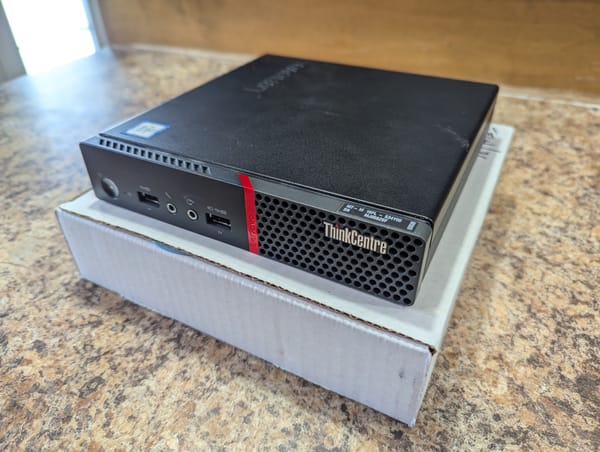Archive: An Interview with Greg Nisbet of Mediazoic
After graduating from college, I worked as a summer intern for a recording studio in Toronto called Euphonic Sound. They bundled in audio recording services along with some marketing, design and PR services for their artists. My main task was writing blog posts and conducting interviews for their podcast series.
The studio and website are long gone, but I’ve managed to recover some of my old content via the Wayback Machine. A lot of them had audio of the interviews, but they were mostly hosted on the website and can't be recovered.
I’ve done some light formatting and editing because frankly the typos are embarrassing, but have tried to otherwise keep these as close to the original versions as possible. Any links are probably all broken, I'm not gonna fix them.
We were all "Companero [Name]" for some reason.
Notes:
- Apparently my SoundCloud account still exists. Can't get into it, but it's still hosting a few of these interviews.
- Mediazoic now looks to be known as RadioMogul.
- I remember the tool being novel at the time. If I recall correctly, it was a link to streaming audio via iTunes or something along those lines.
An Interview with Greg Nisbet of Mediazoic
June 11, 2010
Companero Jack here with another interview. I had the pleasure to sit down with Greg Nisbet, creator of Mediazoic, which is an easy-to-use online music streaming program. How it works and where the idea came from is explained in the interview. Greg, as well as euphonic producer James, are both on the Social Media and Direct-to-Fan marketing panel this July 7th and 8th at the Music Business 4 Artists seminar at the Gibson Showroom in Toronto.
As always, the audio interview is posted below.
Greg, please give a little overview about what Mediazoic is.
Mediazoic is a software company that makes, let’s call it, “music sharing and internet radio software.” So basically, it allows anybody who listens to music on their computer to stream that music out in real time to their friends in social networks and all across the internet.
Where did the idea come from and what did you initially want to do with it?
Well, I’m a lifelong music fanatic and I was actually in my backyard on Yahoo Messenger IM chat with a very good friend of mine in Belize, and I hadn’t seen her for probably 10 years. We had just found each other recently, and the first thing we kind of clicked on was “What music are you listening to?” because we were both totally into music. The thought sort of occurred to me, or occurred to us (I should give her some credit for it), that if she was going to be over at my house, for example, the first thing that we’d do would be put some tunes on and start talking about music, among other things. And I thought that there really should be something to replicate that experience online. I spent the next couple weeks looking around to see if that existed, signed up for a bunch of music services and so on, and nothing really replicated that experience of us just hanging out in real time listening to music together.
What’s the difference between what Mediazoic is doing and sites like Last.fm or Pandora?
Both are fantastic services that I have nothing but praise for. I’m not sure if you’ve had a chance to look at it, but Last.fm is integrated into our site. It’s fantastic resource, especially for information, so actually in the Meziazoic stage, which is the visual browser window that you can look at when you’re listening to music, uses Last.fm artist info to show more information about what you’re listening to. So, I love Last.fm. But on the business side, they recently decided to stop streaming and focus more on scrobbling, which, for us, is great news because what that says is that we’re interested in being partners with them and using their system for all of the great music discovery tools that it already exists for. Pandora, similar kind of thing. I don’t think it’s inconsistent with what we’re doing and with our vision to be integrated with something like Pandora. Whether you like iTunes, or Pandora or whatever. We want to do is be the ones that are helping you share that music.
As a quick note, “scrobbling” refers to the song information presented by Last.fm.
Without getting too technical, explain how Mediazoic works.
From the listener’s side, we just wanted to make it as absolutely easy and idiot-proof as possible. The old joke was that it has to be so easy our dads can use it. And I’m 43, so my dad’s in his early 70s, and he’s actually pretty computer literate for a 70 year old guy. So that was kind of our starting point. So for the listener, we try to be as platform-agnostic as possible, which means all that we’re doing is serving up a link. A simple link, with the justification that anybody can click on it. What happens is that when a listener clicks on one of those links, two things happen: their default browser opens, whether it’s Internet Explorer or Safari, or Firefox or whatever, and then their default media player also opens and plays the stream, so iTunes, Winamp, Windows Media Player, whatever. So on the listener side, you don’t need any kind of software other than what most computers already have installed. Where our technology comes in is on what we call the streamer’s side. Somebody is listening to music on their computer and wants to share it. Basically, we have a small piece of software that cobbled together from several different sources, some of which we wrote ourselves. But what it basically does is it takes the information on the computer, both the audio and song information, and it streams it out through a variety of sources, whether it’s an IM client, or a blog or that type of thing. So we’ve got the two sides: the listener side which doesn’t need any software, and the streamer side where you need to have our software to be able to share that.
Is it open for anyone? How do you go about getting the software to stream from your own computer?
Technically speaking, once you have the software it’s just a matter of hitting connect. It’s that simple, and it runs in the background basically. In terms of “how do you get the Mediazoic streaming software,” be very nice to me. We want to get everything right. We want to get the licensing right. We want to get the rights. There have been some internet music startups that have had huge amounts of potential, and I would say that they’ve grown too quickly. So that’s why we’re in private beta, so we can get everything right before we get it out there. One of the ways we’re doing that is by controlling the streaming side. We can’t control the listener side as much as we can control the streamer side.
How’s the beta testing going? You have 4 or 5 channels to listen to?
Yeah, we’ve got, I believe, 5 streamers now. We’re adding another one within the next week or two. It’s going great. It’s a small group, which is the way we like it. It’s mostly music industry people.
I saw that you had a channel by Alan Cross, which I thought was pretty impressive.
His stream on Mediazoic is top shelf. As soon as it went out to our beta listener group, I got a whole bunch of comments. First of all was “How the heck did you get Alan Cross?” Second of all, was about how good his selection was. So we were pretty happy to have him join the system.
And how did you snag him?
Alan is first and foremost a music guy. In my opinion, he’s got the best music job in Canada. I’m trying to fight him for it, but I’m not there yet. I actually heard him on an interview that he was doing with a blog, and I’ll never forget the expression that he used. I don’t know if it was the title of the interview, or just something he used. He talked about what he called “The Days of the Trusted DJ.” Where now, we’re getting to the stage, with all of the music that’s available, whether you want to talk about legally or illegally, there’s just an enormous amount of music out there. So one of the things I think companies like Pandora saw early was that it’s great having all this music out there, but how do you decide what you’re going to listen to? I think one of the things that Alan was talking about in this interview was that DJs, or really good curators of music, are going to be more and more and more important. Sometimes that means just friends, but I think any real music lover probably has, I’m going to say, no more than a dozen people that they get most of their music recommendations from. Whether it’s a DJ or a friend or whether it’s a record label, for example, no more than a dozen. As soon as I heard Alan say this “Days of the Trusted DJ” thing I found a way to get in contact with him and I said, “Alan, you’ve got to see what we’re doing. You’re going to totally get this.” And sure enough, he got back to me, we set up a meeting and I think he got it immediately. We set up a pilot project on our system, and as I said, it’s been very, very popular.
And his channel: is it just all his music selections, or does he talk? I love listening to him speak. He’s a smart guy.
Ok, well, I’ll have to tell him you say that! That’s cool, that’s cool. One of the things is that, not only is Alan great with music, but he’s also great with technology. He’s already given some great suggestions on how we can make the platform better, and hopefully we’ll continue to get that. It terms of where he get’s it from, believe it or not, it is his jogging list. It’s funny because when he first gave it to me, it had a title something like “Mediazoic running playlist.” And I thought it meant it was running, like he was going to keep adding stuff to it. So I said, “Alan, what kind of a name is Running Playlist?” He goes, “No, no. That’s what I go jogging to. This is the stuff I listen to when I need energy. So how about we call it ‘I Need Energy’ instead?” So we stuck with that. This is literally the stuff he has on his iPod that he goes running with every morning.
You sort of mentioned it before, but can you go over the ideas of simplicity and user-friendliness in Mediazoic?
One of the things we said on the website is that we started with three principles. The first is that our dads have to be able to use it, and it has to be really easy. Also important, from a software development background, is that with the infinite playlist, there’s also the infinite development list. Anyone that’s worked in software development knows what that is. I‘ve got hundreds of features that we could put in there, and we’ve got lots of requests from our listeners and so on, but you can’t have everything. So what we try to do is try to make it what we call “chunkable,” which means we have a very small, basic unit, which is what our beta listeners see now. But we want to be able to build pieces onto that as we grow, and we’re already doing that.
At this point, James, as well as a few studio artists, happened to walk in on the interview.
What made you want to put Mediazoic together?
It’s kind of my mid-life crisis story. I told you the story about sitting outside chatting with my friend. I’ve been just totally into music every since I was probably 11 or 12 years old, and all that stuff started to happen around my 40th birthday. Ffor my 40th birthday, my wife said, “What to do you want?” And I was in my other job at the time, and I said, “You know what I really want? I want to go to the Virgin music festival,” which was the weekend of my birthday and the first one in Toronto, “and I want to disappear for two days. I want to turn off my cell phone and I just want to hang out like I did when I was at Glastonbury in my 20s.” And she said okay. And nobody was invited, no kids, no wife. And one of the things I kind of realized was that I loved this whole thing. Music, everything about music. I love it so much, why am I not doing it for my job? It wasn’t that I was unhappy. I had a good career and a good job, but I just thought, “Why am I not doing this?” So that sort of corresponded with this other epiphany that I was telling you about, chatting with my friend, and I thought, “I’m going to do it.” And that was kind of where it came from.
How did you get in touch with Euphonic?
James: Well, we met at the Open Music Media night.
Greg: Face to face. I guess it was probably via Terry Kerr, right?
James: Terry Kerr told us to check out Mediazoic, and we went and got accounts and stuff and started using it.
Greg: So as the case was with so many people these days, in the digital realm, we met digitally first.
James: That’s how I met Terry, too. Yeah, it happens that way almost more often.
Greg: I would say, even anybody that I call out as a sort-of, Mediazoic operative, same thing. We met digitally. I met Gabriel Nijmeh, who a lot of people know as GCN1 on Twitter, who did the ‘Artists on Twitter’ list. I just thought he was brilliant, so I chased him down until he decided to meet with me in person. Same thing with another guy, Paul Ciniello, who had put in a Craigslist ad for for a singer for his band, and I responded to it. he’s got a little band there, and did some singing for them, and that’s how we met. So that’s how it goes these days.
Mediazoic is definitely a cool concept, and it’ll be really interesting to see where it ends up going. A few of us at the studio are beta users, and we all seem to be enjoying it. I’m really looking forward to more channels being added, specifically, a hip-hop channel.
Greg and James were talking about the possibility of doing a Euphonic stream with artists from the studio, so we’ll see where that goes.
I have a few new interviews recorded to type up and post, so keep checking Studio Manifesto for more content.






